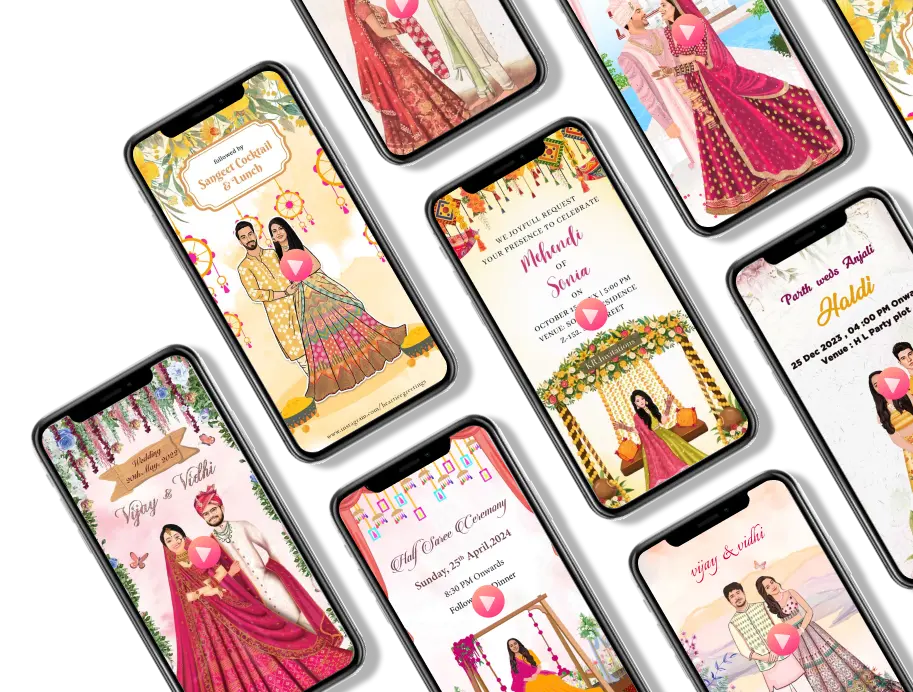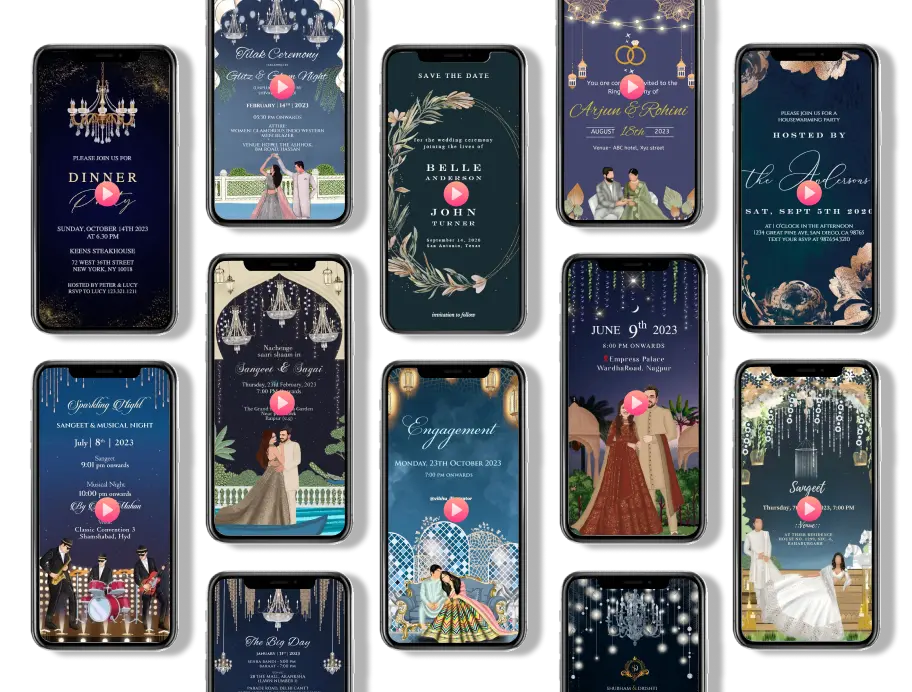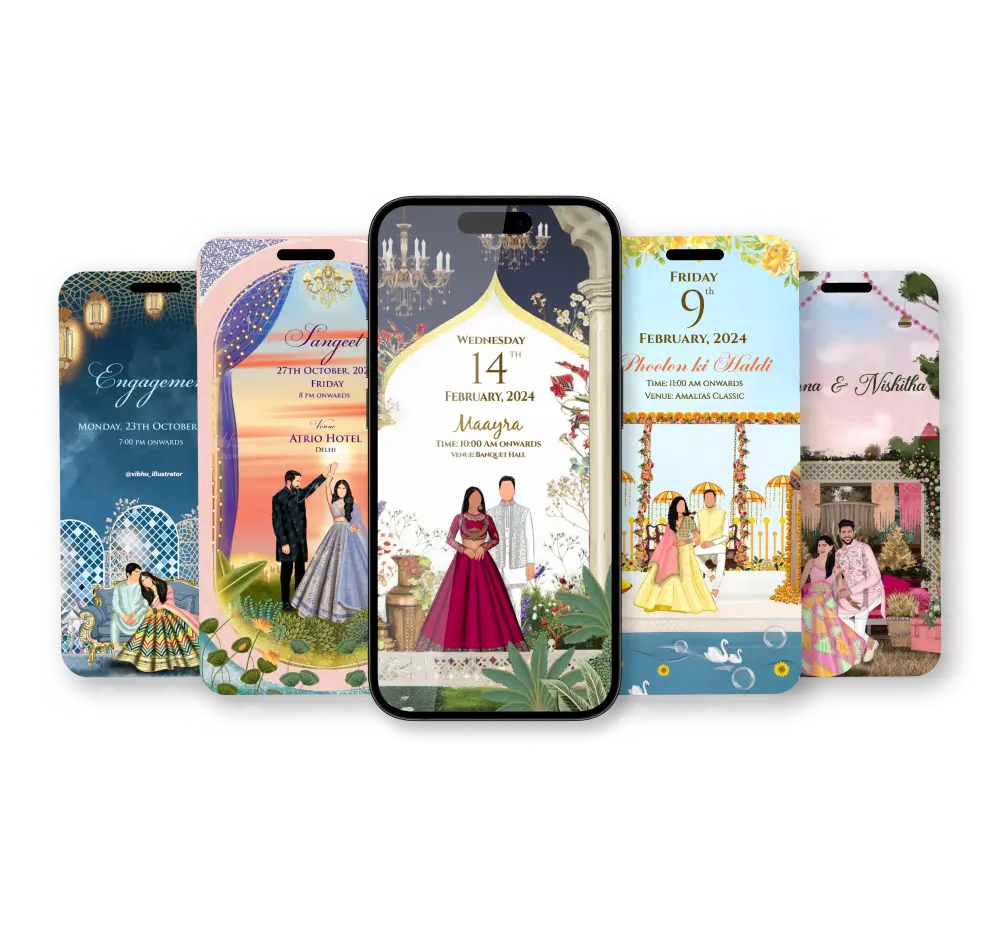The Navjote ceremony, also known as the Navjote or Navjot, is a significant rite of passage in the Zoroastrian faith. This ceremony marks the initiation of a young child into the Zoroastrian community, symbolizing their acceptance of the religion's beliefs and values. If you're planning a Navjote ceremony, you'll want to start with an elegant and meaningful invitation that reflects the importance of this special event. At InvitoAi, we offer a variety of video invitation templates specifically designed for Navjote ceremonies.
Understanding the Navjote Ceremony
The Navjote ceremony typically takes place when a child reaches the age of seven. This is a significant age as it marks the beginning of their spiritual journey and commitment to the Zoroastrian faith. The ceremony involves various rituals, including the child donning the sacred sudreh and kusti, which symbolize purity and devotion. Family and friends gather to witness this important milestone, making it a joyous occasion filled with love and blessings.
To commemorate this special event, a beautifully crafted invitation is essential. Our video invitations at InvitoAi provide a perfect way to invite your loved ones while adding a personal touch to your Navjote ceremony.
Why Choose Video Invitations for Your Navjote Ceremony?
Video invitations have become increasingly popular for various ceremonies, including Navjote. They offer a modern and creative way to share your joyous news with family and friends. With InvitoAi, you can create stunning video invitations that capture the essence of your Navjote ceremony.
Our templates allow you to incorporate traditional Zoroastrian symbols, music, and personal messages, ensuring your invitation reflects the significance of this special day. Video invitations are easy to share via social media, email, or messaging apps, making it simple for your guests to receive and respond to your invitation.
Customizing Your Navjote Ceremony Invitation
At InvitoAi, we understand that every Navjote ceremony is unique. Our video invitation templates are fully customizable, allowing you to add your personal touch. You can choose from various designs, colors, and fonts that resonate with your style and the essence of the event.
Navratri is one of the most significant and celebrated festivals in India, observed for nine nights in honor of **Goddess Durga**. This festival, which spans nine days, is a time of intense devotion, prayer, and celebration. The name “Navratri” translates to "nine nights," during which people gather to worship, perform traditional dances, and seek the blessings of the Goddess. The festival culminates in the worship of the triumph of good over evil, with the **Dussehra** or **Vijayadashami** marking the victory of **Lord Rama** over the demon king Ravana.
What is Navratri?
Navratri is a Hindu festival dedicated to **Goddess Durga**, celebrating her victory over the demon Mahishasura. It symbolizes the triumph of good over evil, and each day of Navratri honors a different aspect of Goddess Durga’s many forms. The nine-day festival includes fasting, prayers, rituals, and community celebrations that vary by region, but all focus on devotion and spiritual renewal.
During these nine nights, people perform **Garba** and **Dandiya** dances, often dressed in colorful traditional attire. The festival is not only a religious observance but also a time for families and communities to come together, celebrate, and renew their bonds. Navratri is a time of joy, positivity, and spiritual growth.
The Rituals and Customs of Navratri
One of the key aspects of Navratri is the worship of Goddess Durga. Each day of Navratri is dedicated to a different form of Durga, representing various virtues such as strength, wisdom, wealth, and protection. These forms are known as **Durga**, **Lakshmi**, and **Saraswati**, among others, and prayers are offered in reverence to each form.
The ritual of **fasting** is common during Navratri, as many devotees abstain from food as a means of purification and spiritual discipline. Some devotees choose to fast completely, while others may avoid certain foods such as grains, meat, or alcohol. The fasting is often accompanied by prayers, chants, and hymns that call for the Goddess's blessings for the well-being of family, health, and prosperity.
Along with the spiritual practices, there are **feasts** and celebrations held at night, with family and friends coming together to offer their devotion. **Puja** (worship) is an essential part of Navratri, with devotees offering flowers, incense, and sweets to the Goddess, while reciting sacred texts and prayers from the **Durga Saptashati** and **Chandi Path**.
Garba and Dandiya: The Traditional Dance of Navratri
Garba and Dandiya are two of the most popular activities associated with Navratri. These traditional dances are performed every night during the festival, with people dressing in colorful **Chaniya Choli** (for women) and **Kediyu** (for men), reflecting the vibrancy and spirit of the festival. The dances are performed in circles around a symbolic **Garba** (an earthen lamp or deity image) with energetic rhythms played on traditional instruments like the **dholak** and **tabla**.
**Garba** is usually performed by women, while **Dandiya** is danced with sticks and often involves both men and women. The dances are not only a way to celebrate but also to express devotion through movement and music. The dances represent the worship of Goddess Durga and the victory of good over evil. The lively rhythms and festive environment create a sense of community and joy, making Navratri one of the most exciting times of the year in many parts of India.
Significance of Navratri in Different Regions
Navratri is celebrated across India with great enthusiasm, but the way it is observed can vary significantly between regions. In **Gujarat**, the festival is famous for its vibrant **Garba** and **Dandiya** nights, where people come together to dance and celebrate with their communities. The atmosphere is electric, with streets filled with dancers, colorful lights, and music.
In **Maharashtra**, the festival is marked by the worship of Goddess Durga with elaborate **Puja** ceremonies and **Pandals** (temporary structures for the worship of deities). Devotees often organize community gatherings and feasts, where families and neighbors come together to share in the celebrations.
In **West Bengal**, the final days of Navratri are celebrated as **Durga Puja**, which involves grand processions, artistic displays of Goddess Durga, and large-scale cultural performances. The festival concludes with the immersion of idols into rivers, symbolizing the return of Goddess Durga to her celestial home.
The End of Navratri: Dussehra or Vijayadashami
The last day of Navratri, known as **Dussehra** or **Vijayadashami**, marks the culmination of the festival. It celebrates the victory of **Lord Rama** over the demon king **Ravana** in Hindu mythology. On this day, effigies of Ravana are often burned in a grand spectacle, symbolizing the destruction of evil and the triumph of righteousness. This event is observed with great enthusiasm, especially in **North India**, where large-scale processions and performances reenacting the epic story of Rama’s battle with Ravana are common.
Dussehra is also seen as a time to celebrate the end of evil forces and the beginning of a new, prosperous season. In many regions, it is customary to perform a **Shami Tree Puja**, a ritual symbolizing the victory of good over evil and the arrival of happiness and prosperity.
Conclusion
Navratri is not only a time for religious observance but also a celebration of life, community, and the triumph of good over evil. Whether through fasting, prayer, dancing, or feasting, the festival brings people together to honor the divine and celebrate the spirit of positivity. From the energetic Garba and Dandiya nights to the solemn prayers of the final day, Navratri is a time for renewal, reflection, and unity. It is a festival that strengthens cultural ties, reinforces community bonds, and fills the hearts of participants with joy and devotion.


